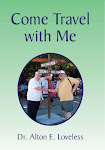
Windsor Castle, home to Queen Elizabeth since childhood, is the largest inhabited castle in the world, with 900 rooms and over 300 employees—grooms, flagmen, art restorers, knights, priests, etc. An intimate glimpse of daily life over the course of a year includes a historic state banquet, a tour of the 15,000 acre grounds with Prince Philip, and the wedding of Prince Charles to Camilla Parker-Bowles. As a Royal home and fortress for over 900 years, the Castle remains a working palace today.
Over a period of nearly 1,000 years it has been inhabited continuously, and altered and refurbished by successive monarchs. Some were great builders, strengthening the Castle against uprising and rebellion; others, living in more peaceful times, created a palatial Royal residence. The outer walls of today's structure are in the same position as those of the original castle built by William the Conqueror in the 1070s.
Visitors can walk around the State Apartments, extensive suites of rooms at the heart of the working palace. They are furnished with treasures from the Royal Collection including paintings by Holbein, Rubens, Van Dyck and Lawrence, fine tapestries and porcelain, sculpture and armor.
I was personally overwhelmed in a large room with neatly placed old guns in various ornate positions that covered most of the walls.
Also, within the Castle complex are many additional attractions, including the Drawings Gallery, Queen Mary's dolls' house, and the fourteenth-century St. George's Chapel, the burial place of ten sovereigns and setting for many Royal weddings.
George IV was a great lover of art and fine decoration. Much of Windsor Castle's present appearance is due to the alterations he instigated in the 1820s.
One of George IV's most remarkable additions was the Waterloo Chamber to show portraits commissioned from Sir Thomas Lawrence to commemorate the defeat of Napoleon at the battle of Waterloo in 1815.
I was in awe as my wife and I visited the St George's Chapel where Ten British monarchs lie buried in the chapel: Edward IV, Henry VI, Henry VIII, Charles I, George III, George IV, William IV, Edward VII, George V and George VI.
Today The Queen uses the Castle regularly, spending most of her weekends there.
The twentieth-century history of the Castle is dominated by the major fire that started on 20 November 1992. It began in the Private Chapel, when a spotlight came into contact with a curtain and ignited the material.
It took 15 hours and one-and-a-half million gallons of water to put out the blaze. Nine principal rooms and over 100 other rooms were damaged or destroyed by the fire, approximately one-fifth of the Castle area.
The next five years were spent restoring Windsor Castle to its former glory. The restoration was completed six months ahead of schedule on 20 November 1997 at a cost of $59.2 million. Seventy per cent of the necessary revenue was raised from opening Buckingham Palace's State Rooms to visitors in August and September. The restoration was undertaken at no additional cost to the taxpayer.
To mark the completion, The Queen and The Duke of Edinburgh held a 'thank you' reception in the restored rooms on 14 November 1997 for 1,500 contractors. On 20 November that year they celebrated their Golden Wedding Anniversary with a ball also held at Windsor Castle.
Psalm 45:15
With gladness and rejoicing shall they be brought: they shall enter into the king's palace.






